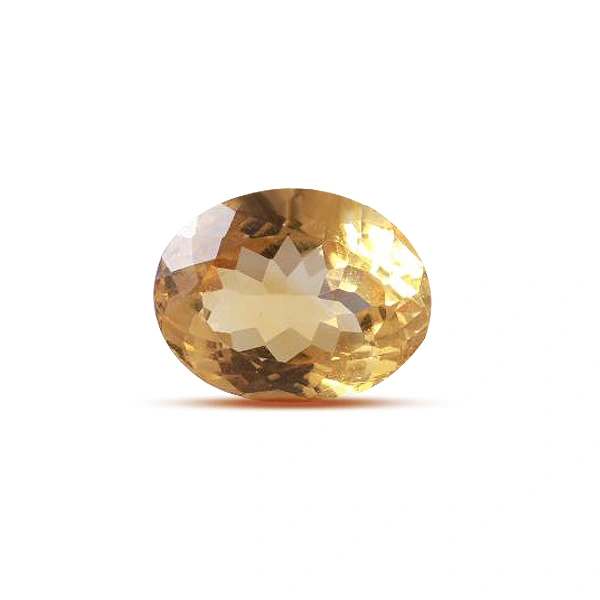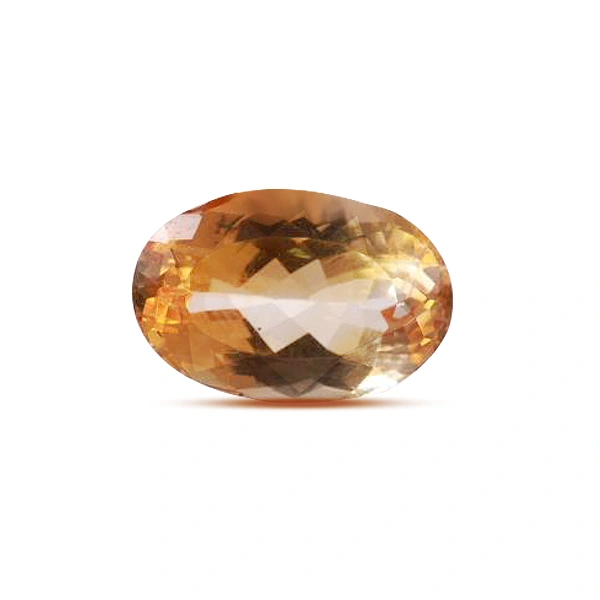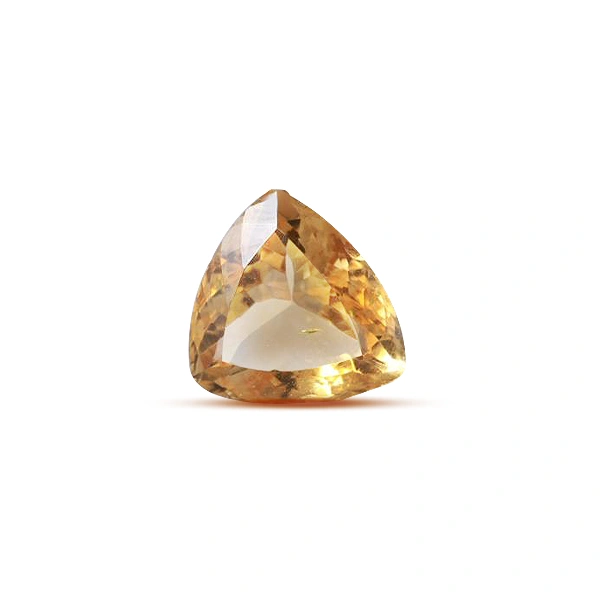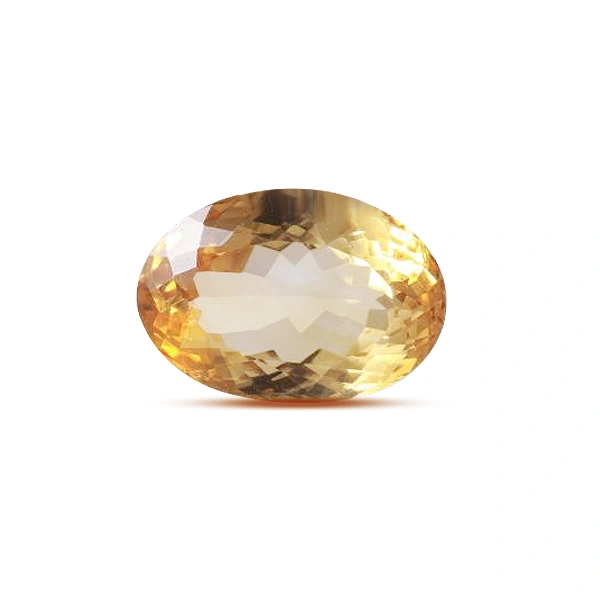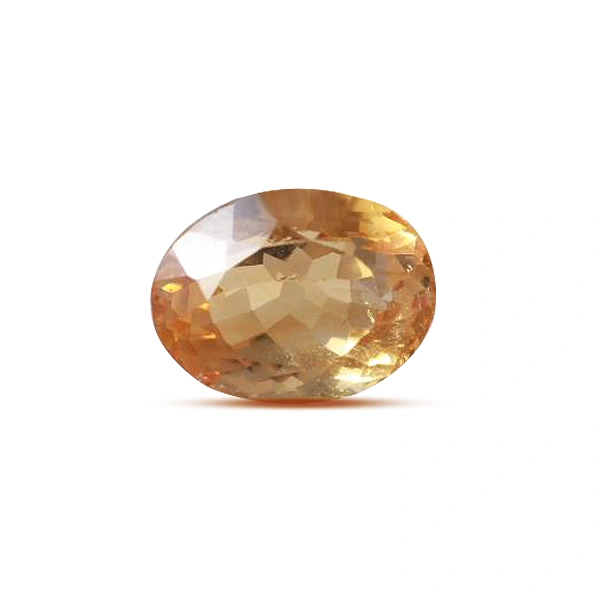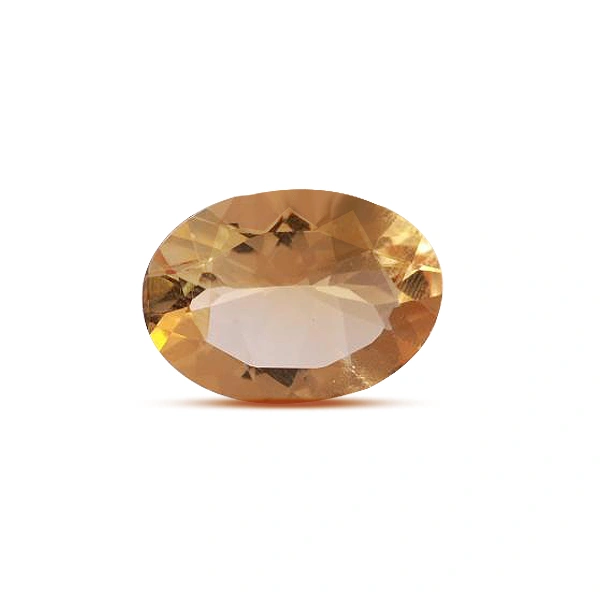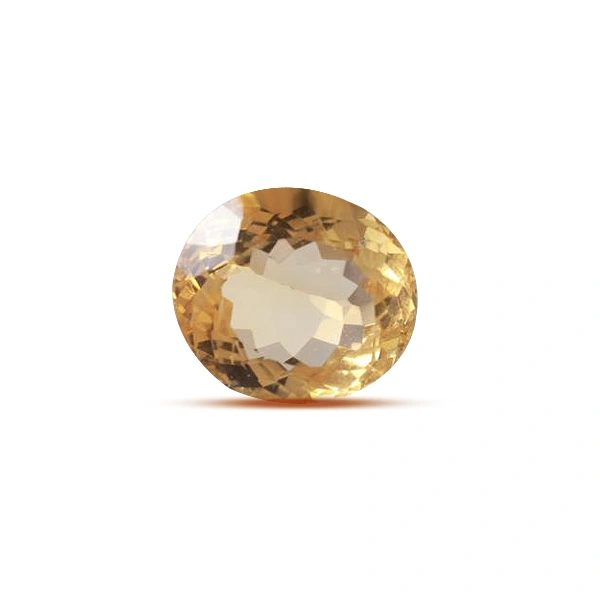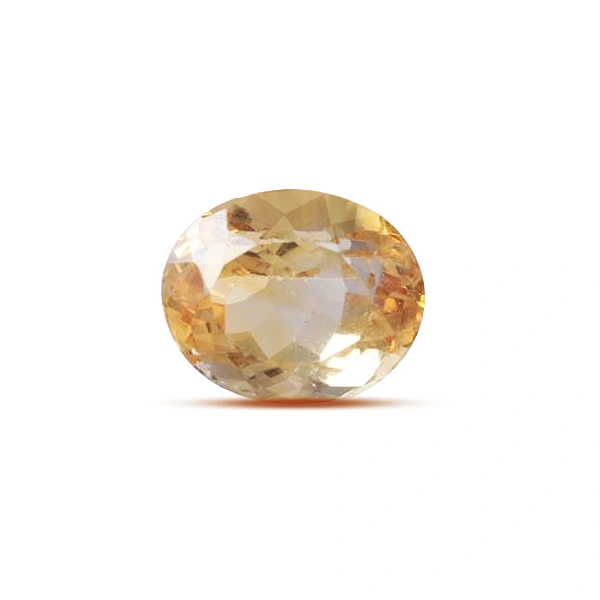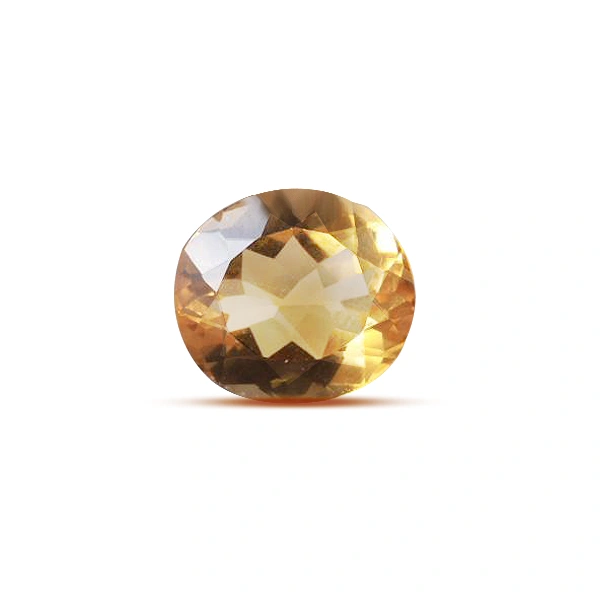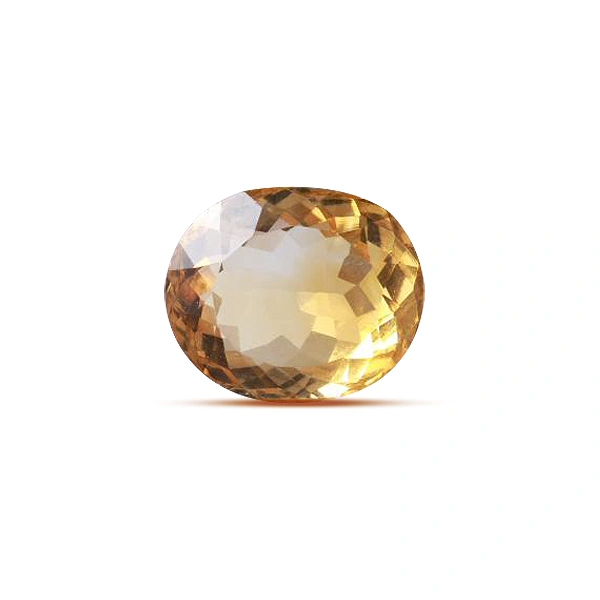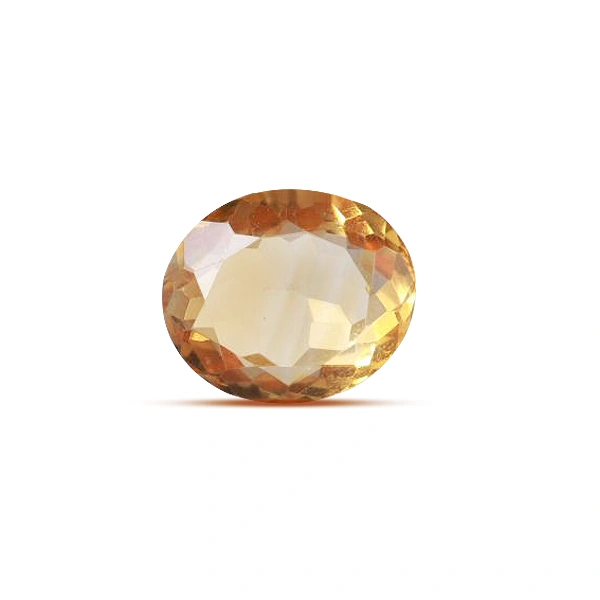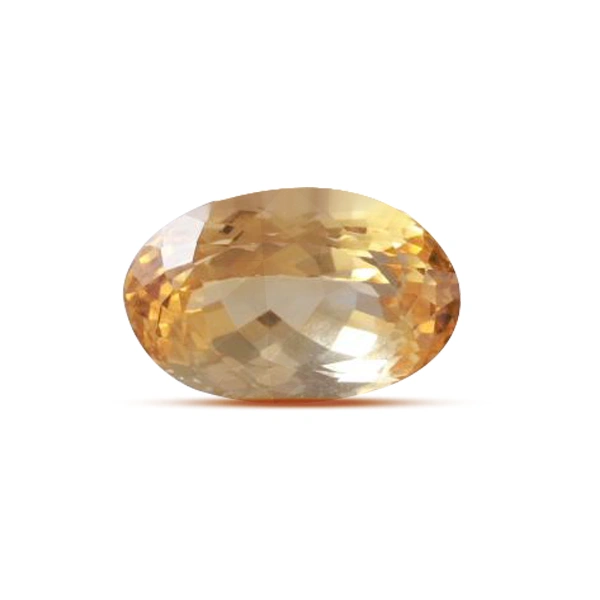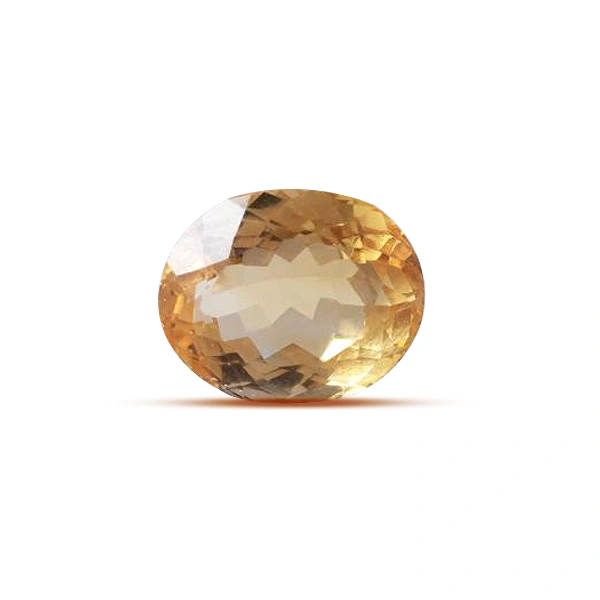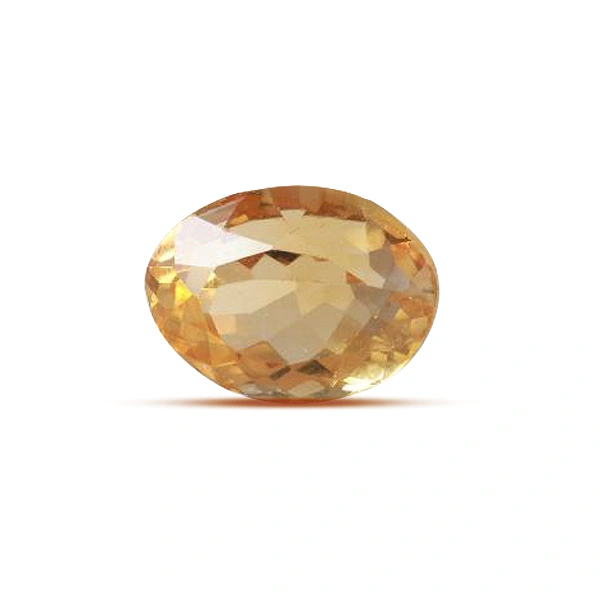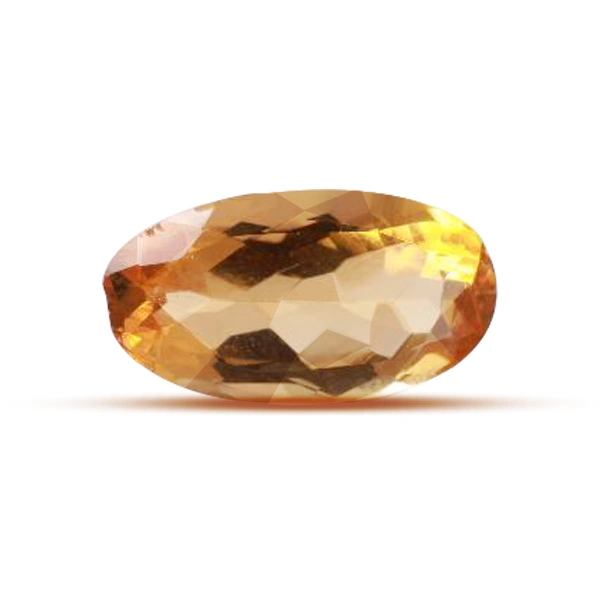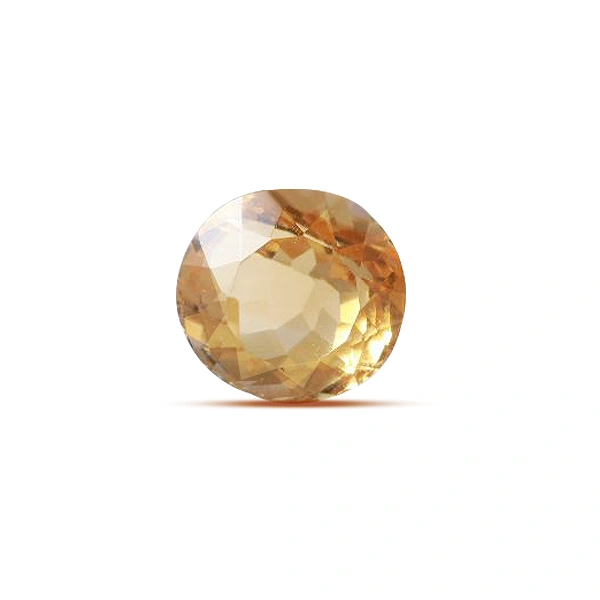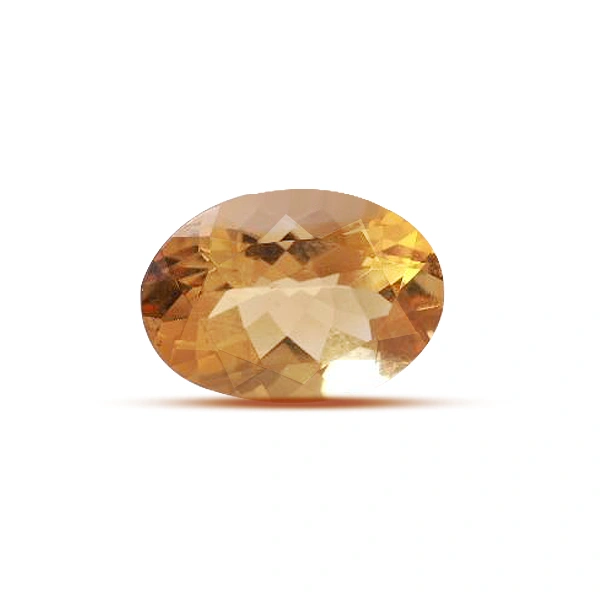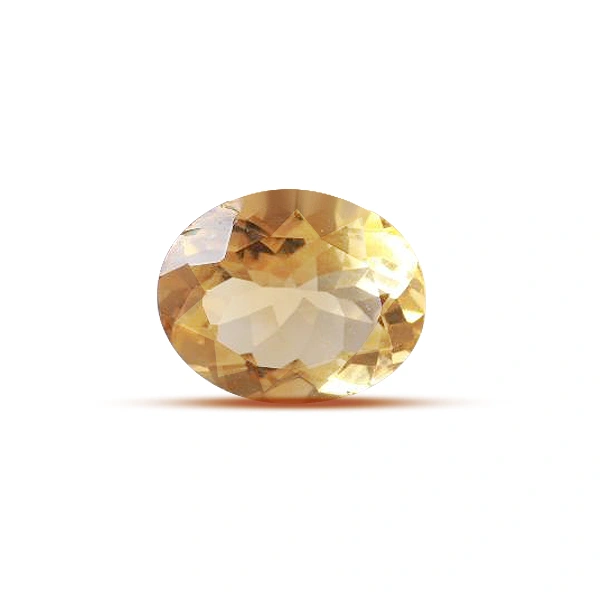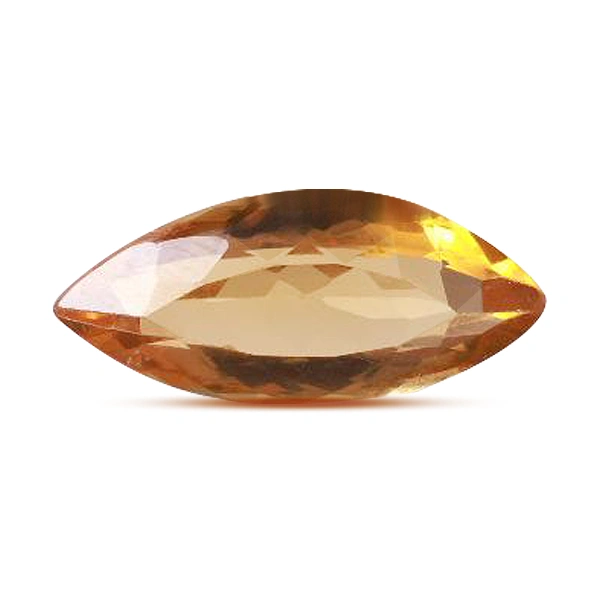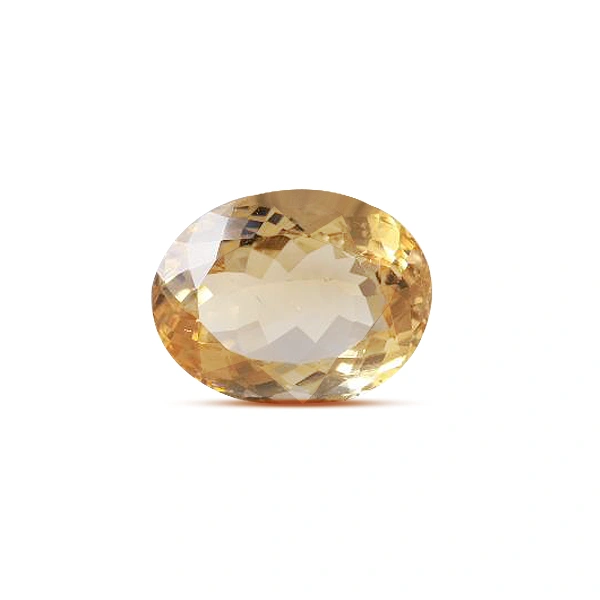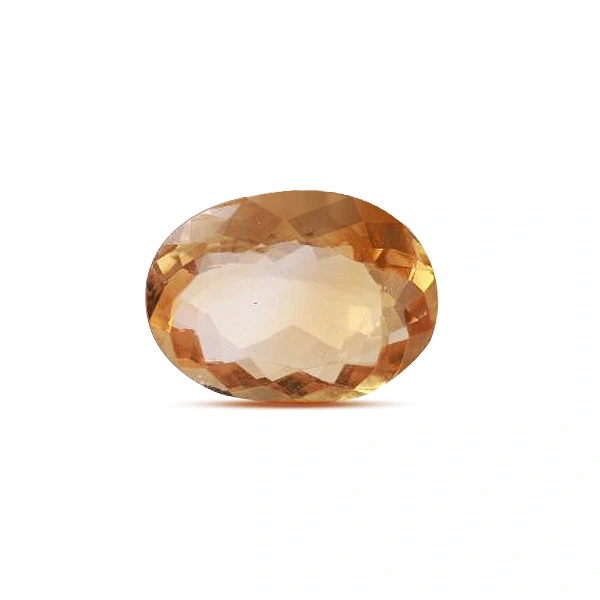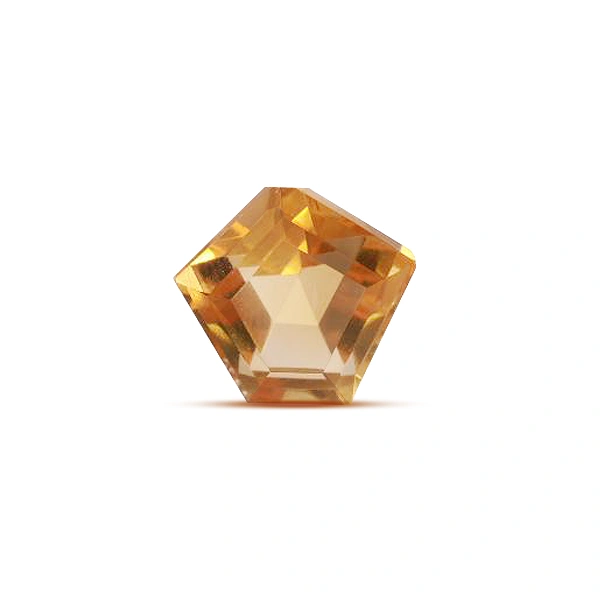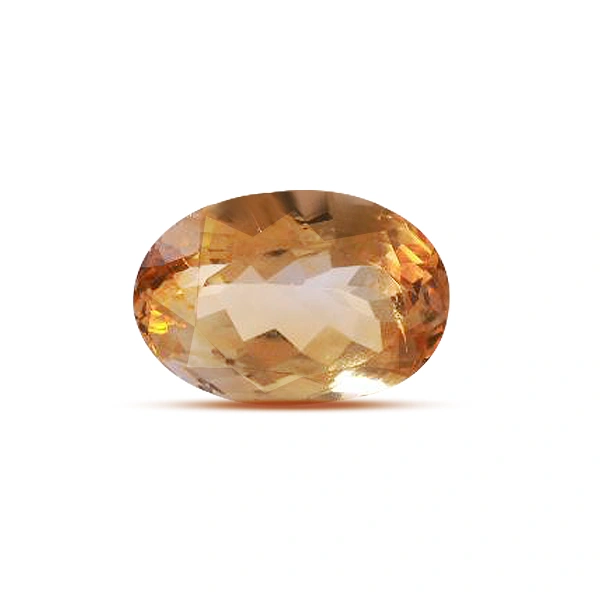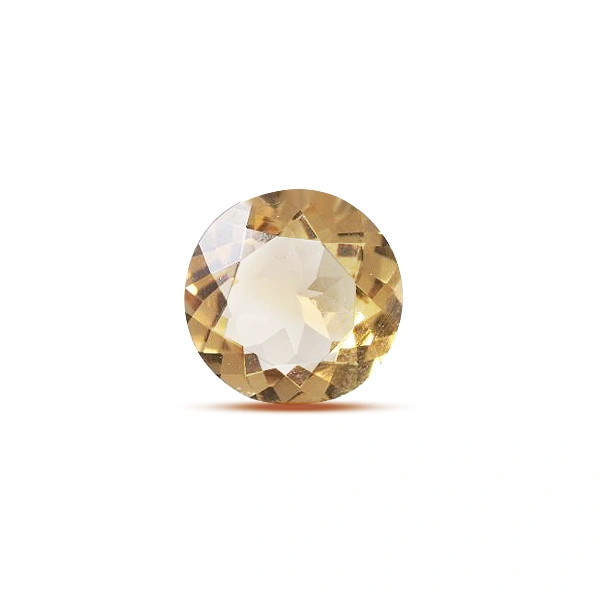Citrine is a beautiful yellow stone with warm golden-yellow to orange hues. It is a lovely gemstone that has been in the eyes of collectors and jewelry lovers across the world. Citrine is one of the most loved and most sought-after stones in the US market due to its affordability, glow, and the stone’s association with growth, success, positivity, and prosperity. Many people have given the term ‘Stone of Success’ to Citrine within the metaphysical circles. The reason behind it is that the stone consists of both beauty and spiritual benefits.
Table of Contents
The word citrine is originated from a French word, "citron, meaning lemon. The name is perfectly suited as the stone has vibrant sun-kissed shades. The gemstone has been a symbol of bringing joy, clarity, and a sense of well-being. Citrine has always been a prized possession for collectors because of its clarity and brilliance, as it does not require any kind of treatment. Moreover, the stone’s connection to the sun, warmth, and life-enhancing energies further adds to its appeal.
Apart from the charm of the stone, Citrine also has healing properties. Citrine is known for manifesting abundance and health and wealth and promoting self-confidence. If you are a gemstone enthusiast, then the stone’s beauty will attract you. On the other hand, a natural gemstone also has metaphysical properties, making it desirable for healing and various other properties as well.
Overview of Citrine
Let’s have an overview of citrine, which includes its origin and characteristics and physical properties that would help you to distinguish the stone from other ones.
Origins & Characteristics
One type of quartz that is well-known for its sunny tints is citrine stone. The majority of citrine that is currently accessible is heat-treated amethyst or smoky quartz, which intensifies its golden hue, even though natural citrine is uncommon. Among the main sources of citrine are:
- Brazil: The top source of premium citrine with deep golden hues.
- Madagascar is renowned for its naturally occurring citrine stones that are highly saturated.
- Russia: Known historically for its citrine supply for royal collections.
- USA: Its domestic popularity is increased by the fact that it is mined in the states of Colorado and North Carolina.
Physical Properties
Citrine is a strong enough stone that can be worn every day because it has a Mohs hardness rating of 7. It is a popular option for a variety of cuts and forms due to its clarity and brilliance, including:
- Round: Timeless and classic.
- Oval: A graceful, long-looking shape.
- Emerald Cut: For a refined appearance, use a step-cut.
- Cushion: For a retro vibe, the edges are soft and rounded.
- Pear & Marquise: Special cuts that enhance brightness.
Different Types of Citrine Stone
Citrine stones, being natural gemstones, are found in different types that are demarcated as per their color and origin. Have a look at different kinds of citrine stone:
Natural Citrine Stone
Natural citrine is uncommon and only found in a few places across the world. Because of its genuineness and natural production, it is highly prized and ranges in color from pale yellow to deep amber. The iron in natural citrine's crystal structure gives it its golden hue, in contrast to heat-treated citrine, which is changed from other quartz types. Gemstone aficionados and collectors place the most value on this type.
Heat-treated Citrine
The majority of citrine on the market now is either smokey quartz or heat-treated amethyst. These quartz types take on a warm, golden tint akin to that of genuine citrine upon exposure to high temperatures. Heat-treated citrine is a great option for jewelry since it is more widely accessible and reasonably priced. It differs from its natural cousin, though, in that it typically has a more vivid orange or reddish tone.
Raw Citrine Stone
Unpolished and uncut, raw citrine stone maintains its natural, untamed charm. It is especially well-liked by energy healers and spiritual practitioners who think that uncut citrine has more potent metaphysical qualities. These stones are frequently used for feng shui, meditation, and decoration.
Smokey Citrine Stone
A special combination of citrine stone and smoky quartz, smokey citrine has an earthy, golden-brown color. This kind is popular among people who value a more muted, enigmatic gemstone appearance because of its striking coloring and anchoring vibe.
Madeira Citrine Stone
This deep, reddish-orange citrine is one amongst the most sought-after varieties and is named after the well-known Madeira wine. It is very sought-after for jewelry, particularly showpiece items, due to its warm, vivid tone. Because of its deep, opulent hue, Madeira citrine is frequently confused with topaz.
Lemon Citrine
Lemon citrine is a vivid, zesty type of citrine seen by its pale yellow, nearly neon-like brightness. Because of its vivid, vivacious appeal, this kind is especially vibrant. A great option for striking and contemporary jewelry designs is lemon citrine.
Golden Citrine Stone
The traditional, sunny type of citrine that most people think of when they think of citrine gemstones is golden citrine. This kind, which ranges from a vivid yellow to a warm golden orange, is very popular for jewelry of many kinds and is linked to prosperity and plenty.
Symbolism & Benefits
Some symbolic features and benefits of citrine stone are:
Historical Significance
- Ancient Greeks wore them as talismans to protect them and ward off evil.
- Medieval Europe: Often utilized by traders and merchants, it is said to draw prosperity and plenty.
- Victorian Era: Common among aristocrats in ornate jewelry settings.
Modern Symbolism
- Stone of Happiness & Energy: Supposed to boost confidence, creativity, and joy.
- November's birthstone: A treasured jewel for those born under the signs of Sagittarius and Scorpio.
- Connected to the Solar Plexus Chakra: Linked to manifestation, self-worth, and personal strength.
Citrine in Jewelry
Popular Jewelry Designs
A versatile gem, citrine stone is frequently used to create exquisite jewelry like:
- Citrine Stone Rings: Perfect for engagement or daily wear, these rings come in solitaire or halo settings.
- Necklaces made of citrine stones: from straightforward pendants to ornate showpiece pieces.
- Bracelets and earrings are ideal for bringing a touch of coziness to any ensemble.
- A fashionable and significant piece of jewelry that exudes optimism is the citrine stone pendant.
Styling Tips
- Citrine and gold blend well together for a cozy, opulent style.
- For a more contemporary look, pair with rose gold or silver.
- For contrast, stack citrine necklaces with different stones like topaz or amethyst.
- Both formal and casual attire look great with citrine pendants and rings.
Citrine for Jewelry Use
Citrine jewelry can be used in various forms with durability and aesthetic approach, some of those styles are:
Ring
Citrine rings are in great demand, ranging from delicate bands to striking statement pieces. They are a great option for everyday wear since they represent confidence and prosperity.
Necklace
A pendant made of citrine stone is a classic and adaptable piece that works for any occasion. Citrine necklaces radiate warmth and charm, whether they are adorned with a stunning halo setting or a simple drop pendant.
Birthstone
Citrine, the birthstone for November, is frequently given as bracelets, necklaces, and rings. It is linked to happiness, abundance, and clarity.
Price Range & Availability
Factors Influencing Value
- Color Intensity: Value is higher for rich, deep golden hues.
- Size & Cut: More expensive stones and finer cuts are sought after.
- Clarity: Premium quality stones are those that are clear and devoid of inclusions.
- Heat-Treated vs. Natural: Heat-treated citrine is more expensive and less common than natural citrine.
Pricing Trends in the USA
The cost of citrine stones varies according to their sourcing and grade. The following are typical price ranges:
- According to their size and quality, raw citrine stones range from $5 to $50 per piece.
- High-quality natural citrine stones range in price from $50 to $500+ per carat.
- Heat-treated citrine is an inexpensive substitute, costing $20 to $100 per carat.
- Depending on the metal settings and quality, citrine stone pendants and jewelry can cost anywhere from $50 to $1000.
Buying Tips
- Look for good clarity and rich, even coloration.
- Note that heat-treated citrine frequently has a deeper, reddish-orange tint, whereas natural citrine has a gentler yellow or golden tone.
- Examine the gemstone in the light to see its natural inclusions and transparency.
Care & Maintenance
- Look for good clarity and rich, even coloration.
- Note that heat-treated citrine frequently has a deeper, reddish-orange tint, whereas natural citrine has a gentler yellow or golden tone.
- Examine the gemstone in the light to see its natural inclusions and transparency.
- Citrine should be kept apart from other jewelry in a lined jewelry box or a soft linen pouch to avoid scratches. Prolonged exposure to sunshine might cause color loss.
Conclusion
Beyond just being a beautiful gem, citrine stone represents warmth, abundance, and enthusiasm. This brilliant gemstone elevates flair and spirit whether it is worn as a necklace, ring, or pendant. Citrine is still a popular choice among gemstone fans in the USA because of its reasonable cost, adaptability, and spiritual importance. Citrine is a gemstone that is as meaningful as it is beautiful, and owning one implies embracing happiness, prosperity, and lively energy.
FAQs
- Is citrine a natural gemstone?
Yes, citrine is a natural gemstone that comes under the domain and variety of quartz. However, finding a natural citrine stone is rare and most of the citrine stones found in the market are treated.
- What is the easiest way to clean citrine stone pendant or jewelry?
The best method to clean any gemstone jewelry is to clean it with warm, soapy water, and a soft brush. Avoid any harsh chemicals and exposure to extreme heat.
- Citrine is the birthstone of which zodiac signs?
Citrine works best with November born that are the Scorpios and Sagittarius zodiac signs.
- Does the citrine fade after some time?
Yes, if the stone is exposed to direct sunlight for a long duration, then the light will cause fading. It is advised to store your jewelry in a soft pouch to avoid any harm.
- Which metal should be worn with citrine?
Citrine stone works well with all the metals like gold, silver, and rose gold which makes it versatile and one of the most wanted stone by the collectors.
 +91 114-314-8316
+91 114-314-8316 +44 208 123 4943
+44 208 123 4943 +1 917 675 4985
+1 917 675 4985
